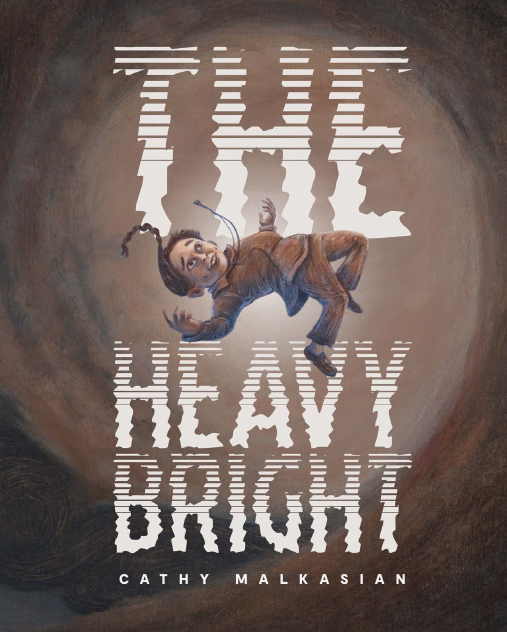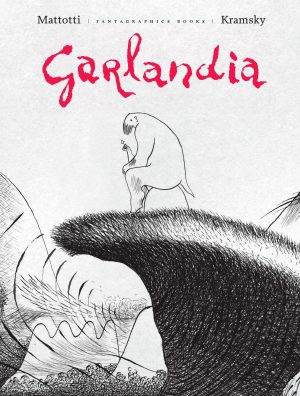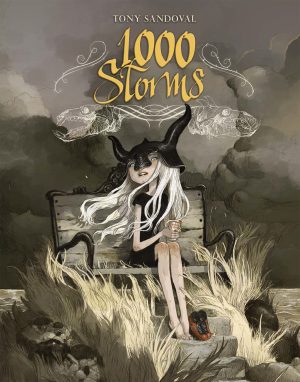Review by Frank Plowright
Cathy Malkasian’s dedication for The Heavy Bright is to anyone willing to read it more than once, which could be self-deprecating humour or an acknowledgement that what follows isn’t a greatly commercial proposition.
The opening pages introduce a flying woman in the company of grumbling men confined to the ground. They address each other in strangely formalised language, the men actually dead and being confronted with their past. At first it seems to be eccentric fantasy, but as with most of Malkasian’s graphic novels there are deeper references to the real world. Here it’s primarily the pernicious aspects of male-dominated attitudes, as we see a planet destroyed by war and covetous desires, yet Malkasian’s purpose isn’t to thrash the obvious, but to provide alternatives, albeit idealistically. That eventual positivity raises The Heavy Bright above your standard post-apocalyptic sequence.
After an extended prologue Malkasian shifts the attention to Arna, horrified at the casual acceptance of the unacceptable she sees in a grim world where young girls are routinely traded to old men by their fathers for needed equipment. Arna’s escape comes from being approached by the flying woman to search for and release objects causing conflict, but she’s hampered by Malkasian’s storytelling method being the broad repetition of the same scenario as she deals with one evocatively named commander after another. Hammering home the point about exploitation is strangely lacking subtlety in a story otherwise thriving on it.
The nuance extends to the art, which is thoughtful, expressionistic and far from the standard comic pages. Arna exudes cheerful character, and there’s a consistently joyous depiction of women laughing at the foolishness of men. Backgrounds are for the most part kept simple, but can expand into memorable watercolour scenes.
When Arna falls in with the more adventurous Sela she finds a soulmate, but The Heavy Bright is a long form consideration of what might change, and by the third chapter much has. Arna, now an adult, has deactivated enough objects to ensure entire regions have lived in peace, but now girls disappear on becoming women, which will eventually wipe out life.
Although The Heavy Bright has moments of absurdism, Malkasian has serious points to make about masculinity, and her spotlight shines on the shamefully obvious. However, it’s also meandering and unfocussed, yet builds to a strong ending that could almost stand alone as a separate story. It provides both a joyful explanation for seemingly impossible events and an unutterably cruel experiment in forging a warrior.
Malkasian’s work is consistently original, she has something to say and her drawing is attractively individual, all of which combines to take The Heavy Bright a fair distance, but readers may also be frustrated by her dreamlike storytelling in which much seems unsaid. Perhaps that second reading is essential.





